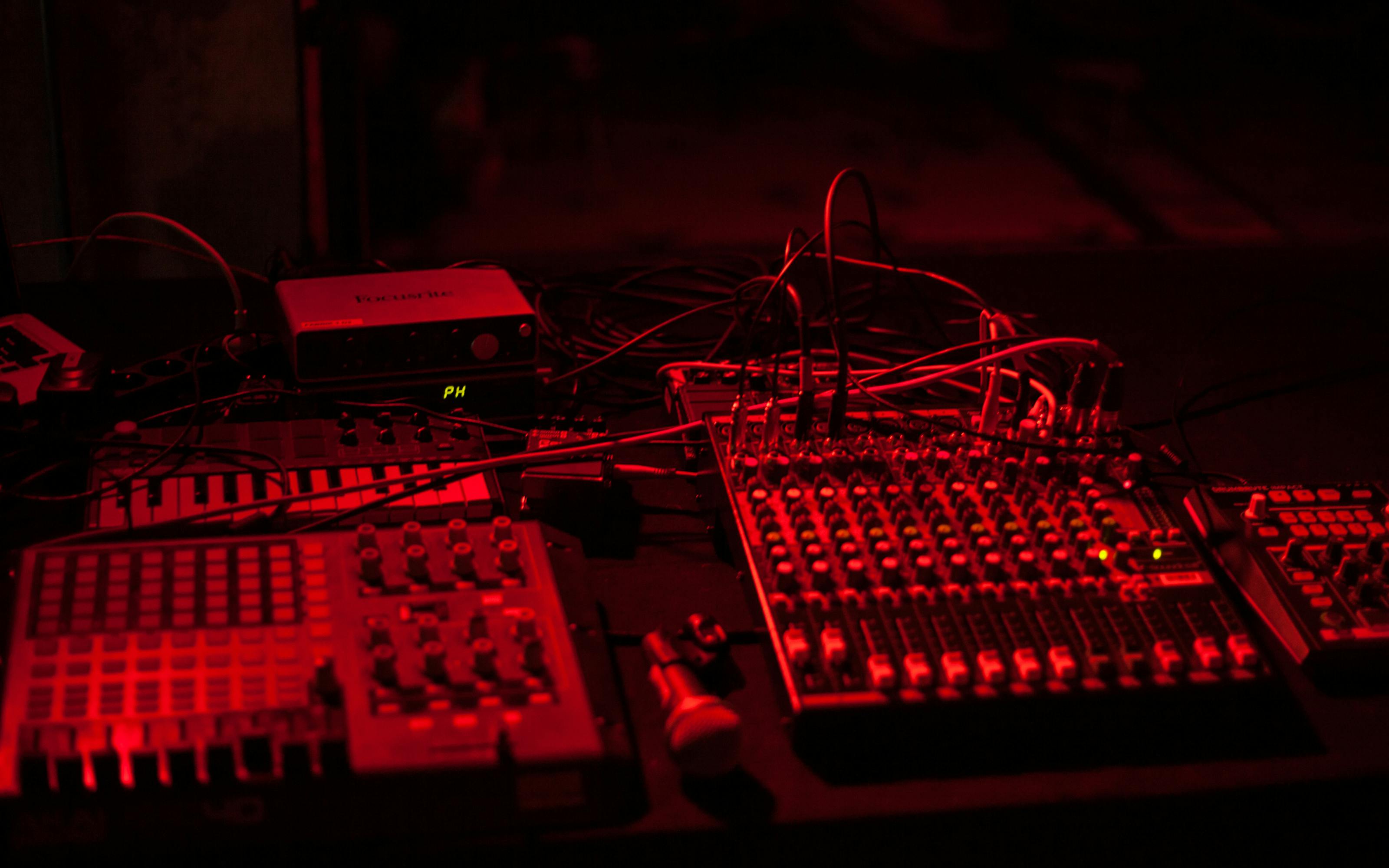
We Recap the Performances & Installations of Signals Festival 2019
Posted on 2019-06-03T22:00:00+0000 in Student work
Our annual Signals extravaganza showcases the best performances, installations and screenings of our music, film and acting students. Here's what went down in our biggest event ever.
Coloured lights, crazy costumes, trippy projections, dancers and as much gear as there were friendly faces. Entering Catalyst on Signals Festival 2019, our four-day electronic music and film extravaganza, was like stepping into an intimate event venue. Except, behind the show and the musicians’ bravado was an electrifying sense of the unknown.
For the first-year Electronic Music Production & Performance students, Signals Festival was not only a chance to perform to a public audience, but their final assessment. However, nerves soon gave way to excitement as performance after performance came together. The word of the day: diversity. Having been immersed in their own projects throughout the year, many of the performers were as surprised as the guests about the incredible variety of music on show. “You can hear how your classmates have grown,” one student commented in our Instagram Stories, “it’s really wholesome.”
Programme lead Eliad Wagner agreed: “The entire student body showed really great potential. You can see much clearer how they have developed during the year as well as where they are potentially headed. That’s really exciting. Also, and quite important, I was really impressed by the sense of group support among the student groups. We had much more of an audience for the performances than any previous year and that is truly great to see. Supportive groups are so so important for succeeding in the EMP programme. I’d really like to congratulate everyone for the way they took on this challenge and the way they supported their friends.”
Student and sonic explorer Henri Falk‘s dark ambient piece was among the most impressive performances. “It was called Under the Sea, the same name as my upcoming EP,” he tells us. “It has ocean and wind noise always in the background. There is a mystical female voice talking about disappearing under the sea and having a sensation of drowning. The feeling I have tried to create in this piece is to be lost out in a vast ocean. I was using Ableton Live, a controller, mixer and some hardware effect pedals.”
Whether it’s in a club, a concert hall or a school, no performance is without its technical issues. “I felt it went okay,” Henri reflected, “but I was quite disappointed because I ran into plenty of technical problems during the setup. That was stressful and resulted in starting my performance late and, worst of all, not being able to play the visuals I had intended for the performance. For some reason, all settings were suddenly gone for my live visuals and I just had to go with something improvised on the fly. The visuals I had planned to use were really fitting to this piece I felt so it was a bummer that I did not manage to deliver the full experience.”
It wasn’t just the Electronic Music Production & Performance students who got to showcase their work. The Film Production and Screen Acting students screened their collaborative short films and two Creative Audio Production & Sound Engineering students – Tom Reger and Lorenzo Bove – presented sound installations.

Lorenzo’s installation, simply named Q, was an interplay of architecture and sound. “Eight loudspeakers are distributed according to a specific spatial programme,” he explains. “The sound travelling between them defines an abstract magmatic environment; a space without defined boundaries; an undefined block of sound surrounding the user.” Using touch only, the participants were invited to interact with a device to experience how the continuous acoustic changes influenced their perception of space. “Q is not a space for producing music,” says Lorenzo. “It is an instrument for producing space with sound.”

Lorenzo created the installation together with his Roman friends: composer, engineer and sound artist Lorenzo Minneci, graphic artist and illustrator Giulia Cabassi and architect Stefano Cazzaniga. “The response from the audience was extremely positive,” Lorenzo concludes, “and we received a lot of interesting feedback in terms of future development.”